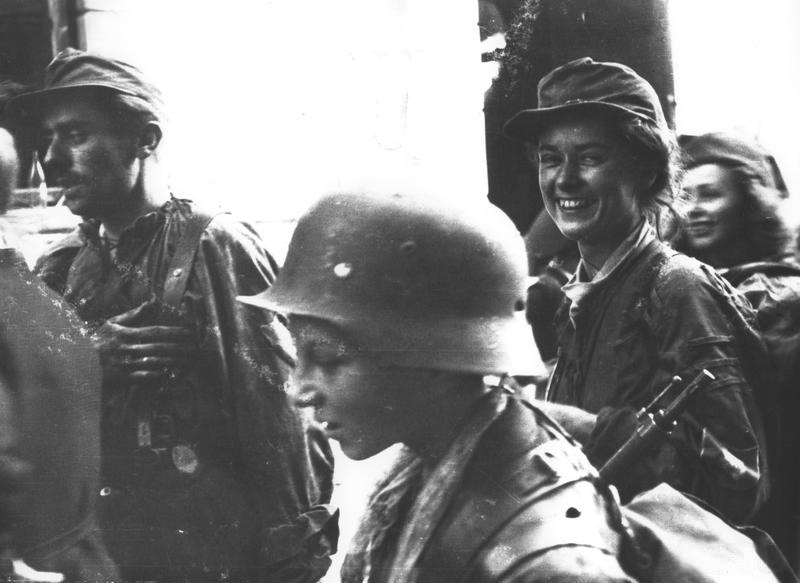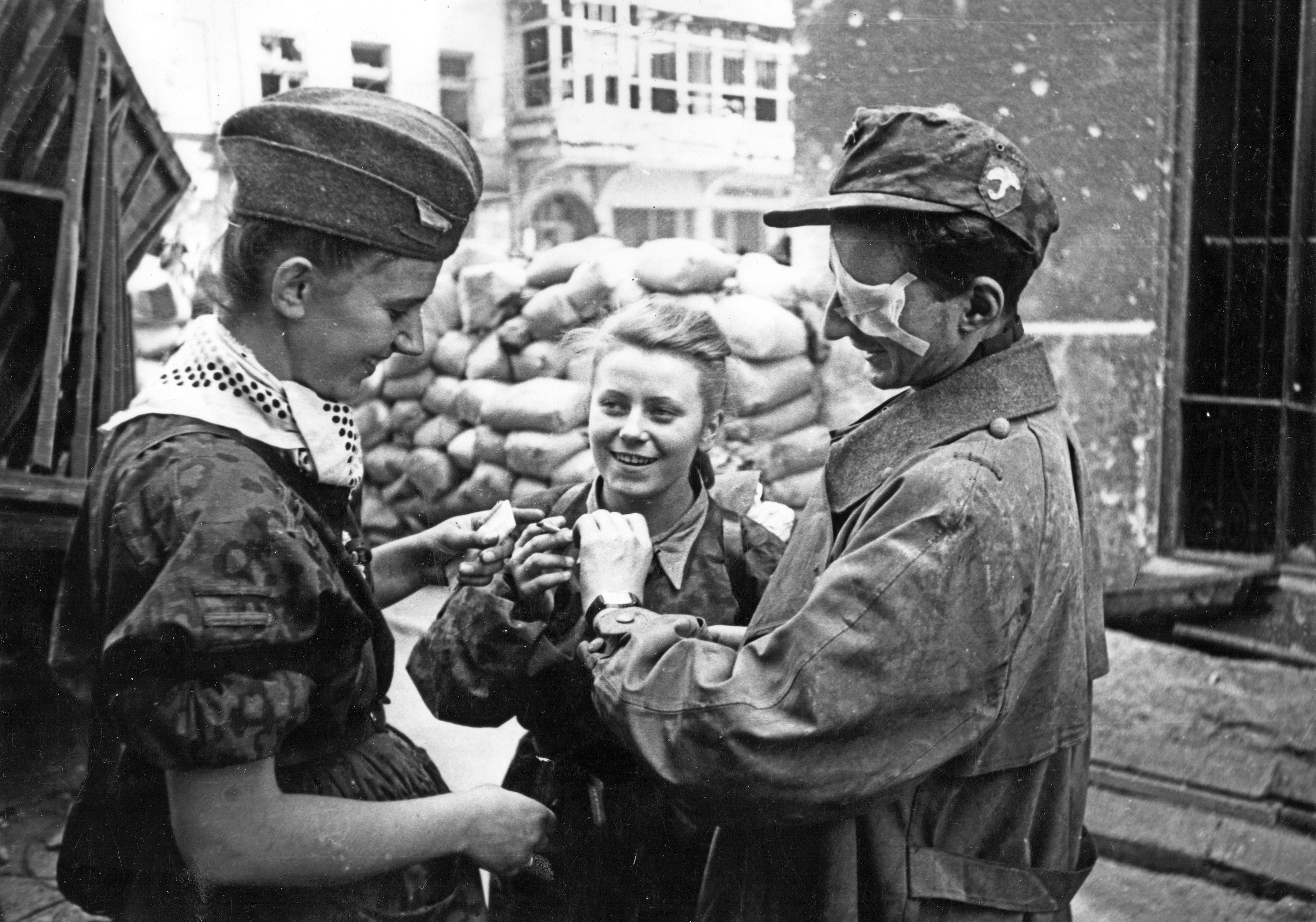Batalion Parasol on:
[Wikipedia]
[Google]
[Amazon]

 Battalion Parasol (Polish: ) was a Scouting
Battalion Parasol (Polish: ) was a Scouting
Franz Kutschera, Search.com
/ref>
Warsaw Uprising Witnesses: Battalion Parasol
The Warsaw Rising Museum
{{Authority control Battalions of Poland Military units and formations established in 1944 Units and formations of the Home Army Special forces of Poland Warsaw Uprising *Parasol Scouting and Guiding in Poland Military units and formations disestablished in 1944

 Battalion Parasol (Polish: ) was a Scouting
Battalion Parasol (Polish: ) was a Scouting battalion
A battalion is a military unit, typically consisting of 300 to 1,200 soldiers commanded by a lieutenant colonel, and subdivided into a number of companies (usually each commanded by a major or a captain). In some countries, battalions a ...
of the Armia Krajowa, the primary Polish resistance movement in World War II. It consisted primarily of members of the Gray Ranks
"Gray Ranks" ( pl, Szare Szeregi) was a codename for the underground paramilitary Polish Scouting Association (') during World War II.
The wartime organisation was created on 27 September 1939, actively resisted and fought German occupation in ...
. The battalion distinguished itself in numerous underground operations and took part in the Warsaw Uprising
The Warsaw Uprising ( pl, powstanie warszawskie; german: Warschauer Aufstand) was a major World War II operation by the Polish underground resistance to liberate Warsaw from German occupation. It occurred in the summer of 1944, and it was led ...
of 1944, as an element of the Radosław Group
Radosław Group ( pl, Zgrupowanie Radosław) was the codename of a group of Kedyw, a Polish World War II Armia Krajowa organization, units during World War II created shortly before the outbreak of the Warsaw Uprising.
Organization
The ''Radosła ...
.
History
It was first organized as "Agat" ("Anti-Gestapo") unit by Adam Borys "Pług", aCichociemni
''Cichociemni'' (; the "Silent Unseen") were elite special-operations paratroopers of the Polish Army in exile, created in Great Britain during World War II to operate in occupied Poland (''Cichociemni Spadochroniarze Armii Krajowej''). Kazimi ...
elite soldier parachuted from England in the fall of 1943. Due to arrest of Tadeusz Kostrzewski "Niemira" on 2 January 1944 it changed its name to "Pegaz" ("Przeciw Gestapo – Against the Gestapo
The (), abbreviated Gestapo (; ), was the official secret police of Nazi Germany and in German-occupied Europe.
The force was created by Hermann Göring in 1933 by combining the various political police agencies of Prussia into one orga ...
"), and after another arrest it was reorganized as "Parasol" (''umbrella'') battalion. The last name referred to a parachute, as the unit was intended to join Polish 1st Independent Parachute Brigade
The 1st (Polish) Independent Parachute Brigade was a parachute infantry brigade of the Polish Armed Forces in the West under the command of Major General Stanisław Sosabowski, created in September 1941 during the Second World War and based in ...
in free Poland.
The battalion is renowned for its numerous military actions in 1943–1944. It organized assassination missions, targeting key Gestapo officers and high-ranking Nazi Germany
Nazi Germany (lit. "National Socialist State"), ' (lit. "Nazi State") for short; also ' (lit. "National Socialist Germany") (officially known as the German Reich from 1933 until 1943, and the Greater German Reich from 1943 to 1945) was ...
officials who were responsible for extreme terror in the Warsaw District. One such mission was successfully carried out under the code name Operation Kutschera
Operation Kutschera was the code name for the successful execution of Franz Kutschera, SS and Reich's Police Chief in German-occupied Warsaw, who was shot on 1 February 1944 by a combat sabotage unit of Kedyw of the Home Army (predecessor o ...
, which resulted in assassination of the SS and Police Leader Franz Kutschera
Franz Kutschera (22 February 1904 – 1 February 1944) was an Austrian Nazi Party politician and '' SS-Brigadeführer''. He was a member of the '' Großdeutscher Reichstag'' and served as the Acting ''Gauleiter'' of Carinthia from 1939 to 19 ...
, who was shot in the center of Warsaw
Warsaw ( pl, Warszawa, ), officially the Capital City of Warsaw,, abbreviation: ''m.st. Warszawa'' is the capital and largest city of Poland. The metropolis stands on the River Vistula in east-central Poland, and its population is officia ...
(in front of the SS Headquarters) in February 1944./ref>
Józef Szczepański
Józef Szczepański (; 30 November 1922 in Łęczyca - 10 September 1944 in Warsaw) was a Polish poet who was a member of the Armia Krajowa Polish resistance. Commander of the Battalion Parasol during the Warsaw Uprising, known under his codename ...
, a poet, was among the commanders of this unit. The poet Krzysztof Kamil Baczyński fought in its ranks and was killed in action by a German sniper in the first few days of the Warsaw Uprising.
Heir to the tradition of the battalion is JW Komandosów
The Jednostka Wojskowa Komandosów, commonly called ''JWK'' and formerly known as ''1 Pułk Specjalny Komandosów'' (''1 PSK''), is one of six special forces units currently operating within Poland's ''Centrum Operacji Specjalnych - Dowództwo Ko ...
and its detachment Zespół Bojowy C.
Notable members
* Krzysztof Kamil Baczyński * Adam Borys *Józef Szczepański
Józef Szczepański (; 30 November 1922 in Łęczyca - 10 September 1944 in Warsaw) was a Polish poet who was a member of the Armia Krajowa Polish resistance. Commander of the Battalion Parasol during the Warsaw Uprising, known under his codename ...
* Jerzy Zborowski
Jerzy Eugeniusz Zborowski (''nom de guerre'': Jeremi, Jurek, Jurek Kowalski, Kajman Okularnik, Jurek Żoliborski) was born on 26 July 1922 in Warsaw and died in September 1944 in Warsaw, Poland).
He was a Polish Scoutmaster ( harcmistrz), scouti ...
Losses during the Warsaw Uprising
References
External links
Warsaw Uprising Witnesses: Battalion Parasol
The Warsaw Rising Museum
{{Authority control Battalions of Poland Military units and formations established in 1944 Units and formations of the Home Army Special forces of Poland Warsaw Uprising *Parasol Scouting and Guiding in Poland Military units and formations disestablished in 1944